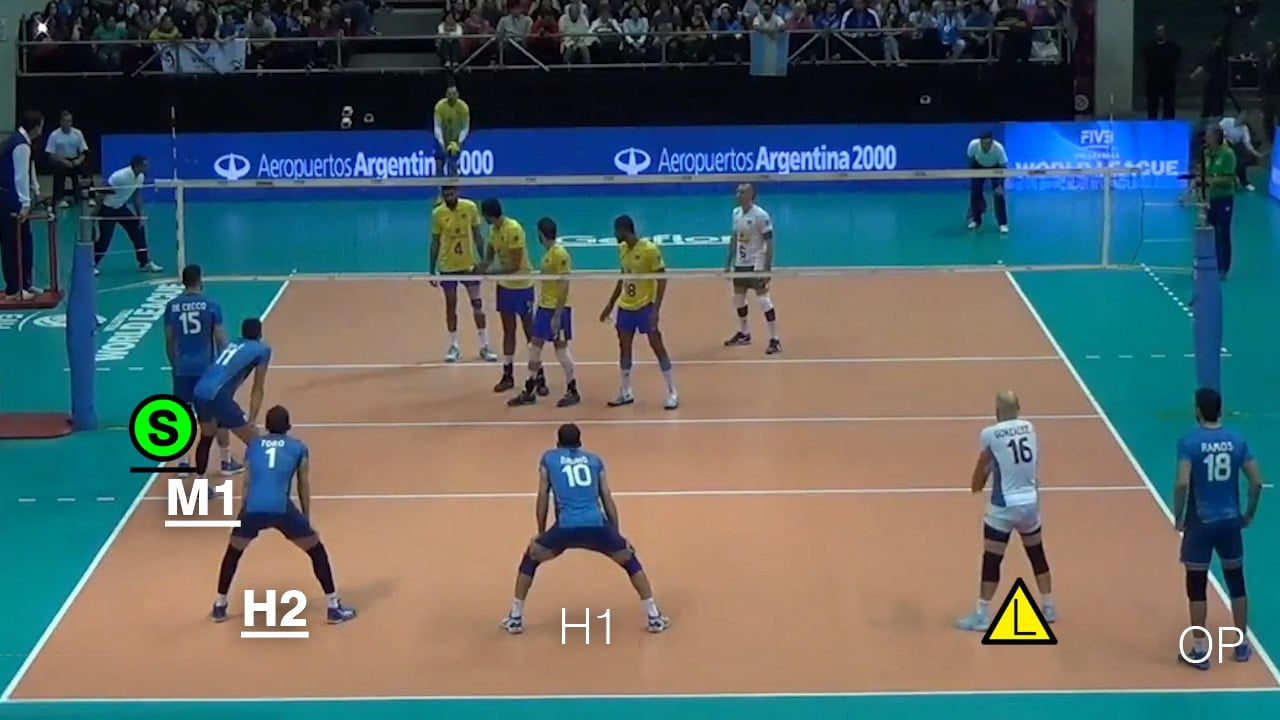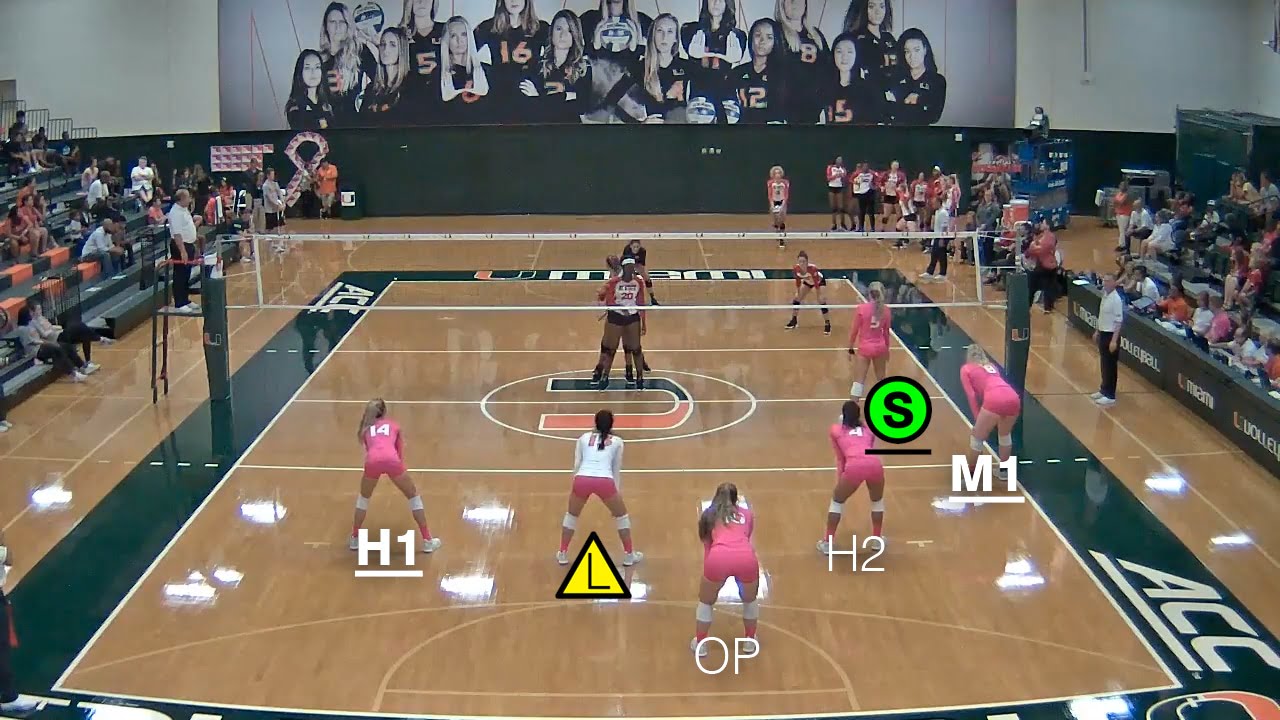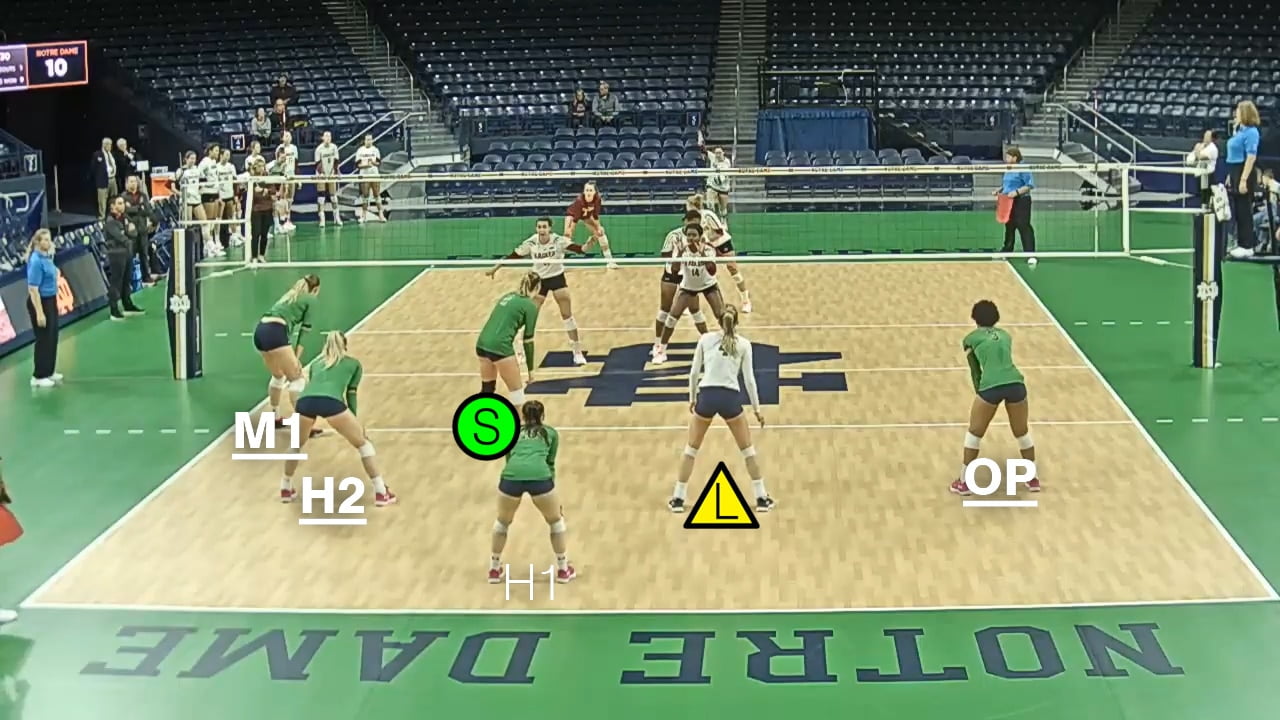AN INTRODUCTION TO ROTATION 4 IN VOLLEYBALL
If you are running a 5-1 offense, Rotation 4 in volleyball is the first rotation with a front row setter. The only two front row attackers are the H2 and the M1. This opens up some options offensively for the middle attacker, because there is no front row opposite. Because of this, many middle attackers (especially in the women’s game) will hit slides in Rotations 4, 5, & 6.
Rotation 4 allows for multiple options both for passing and attacking routes for the front row players.
Note: If you are running a 6-2 offense, the Rotation 4 formations and options will be a repeat of the Rotation 1 formations and options. The following post will focus on Rotation 4 in a 5-1 offense.
Rotation 4 - Player Positioning
Here is where the players are in Rotation 4.
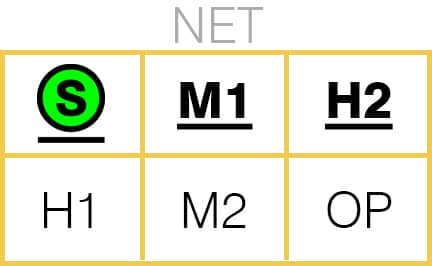
Bold & Underlined Text = Front Row Players
In Rotation 4, the Opposite is in zone 1, followed by the H2, the M1, the Setter, the H1, and the M2 (replaced by the libero). It’s fairly common, especially in women’s volleyball, to have a defensive specialist replace the Opposite when the Opposite is a back row player. The end of this post will have more details about that.
ROTATION 4 – Traditional Serve-Receive Option
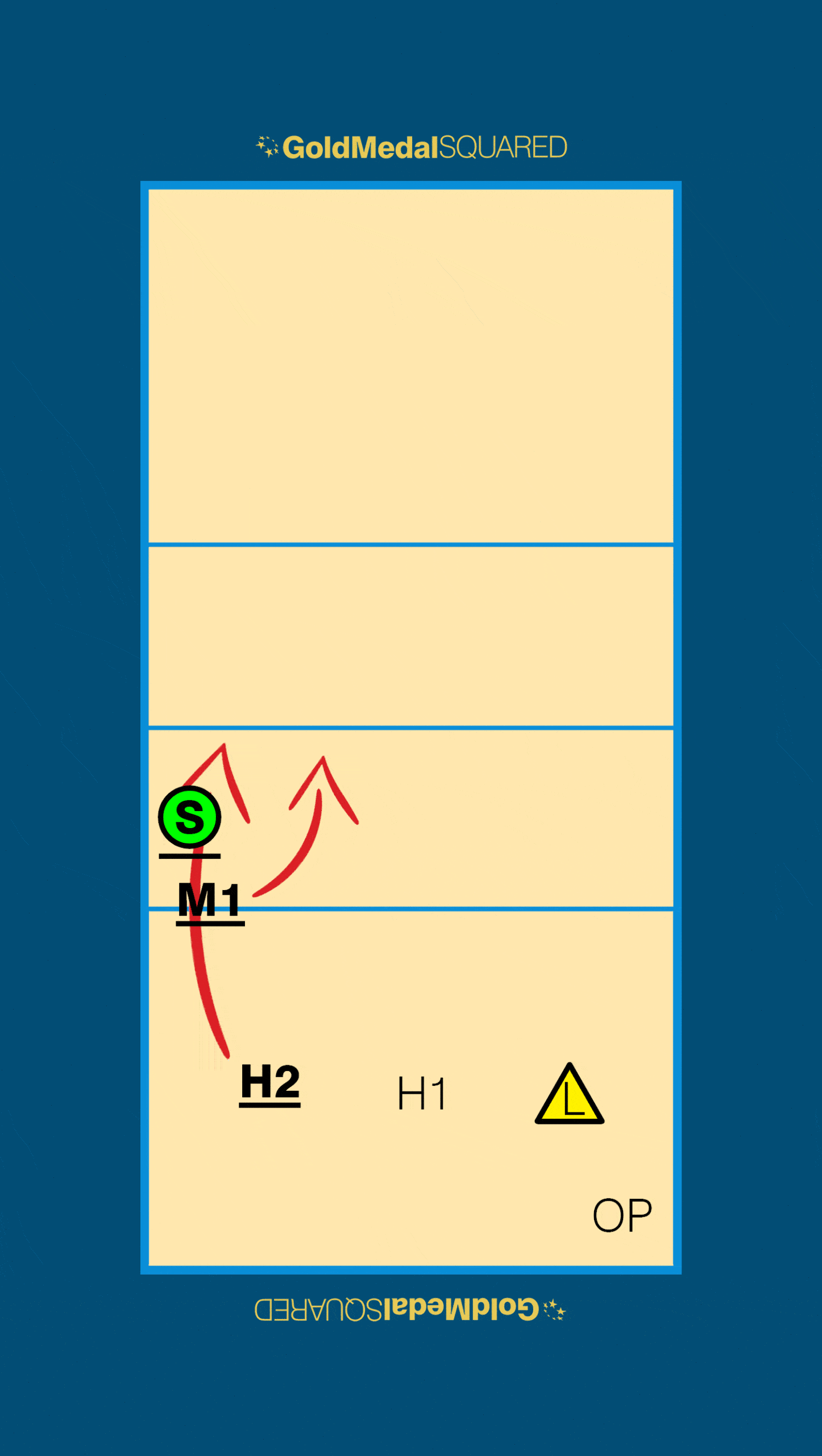
Player Assignments by Position:
S: Starts in Zone 4
H1: Passes in Zone 6
L: Passes in Zone 1
OP: Moves back to the end line and doesn’t pass
H2: Passes in Zone 5 and hits Gos
M1: Starts in Zone 4 and hits Gaps/Quicks OR Slides
Advantages/Benefits:
- The M1 has several offensive options – Gap, Quick, or Slide.
- The Setter starts the rally in a spot that allows her to get to her spot without traveling a long distance.
- The Opposite can help call “in” or “out” for the three passers.
- With the Setter now in the front row, setter dumps are legal.
- The Opposite is in a position to hit a D from the back row.
Disadvantages/Drawbacks:
- The Libero is not passing in the middle of the court, which would be disadvantageous if the Libero is the best passer.
Important Overlap Rules Considerations:
- The Setter must be to the left of the M1.
- The M1 must be to the left of the H2.
- The Opposite must be to the right of the Libero.
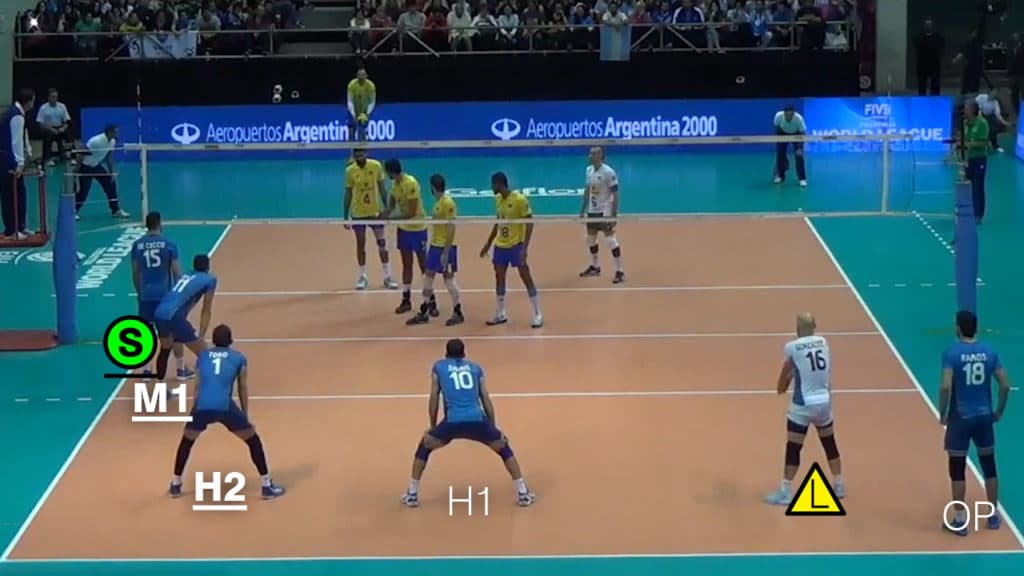
ROTATION 4 - Opposite Passing Option w/out H2 Passing
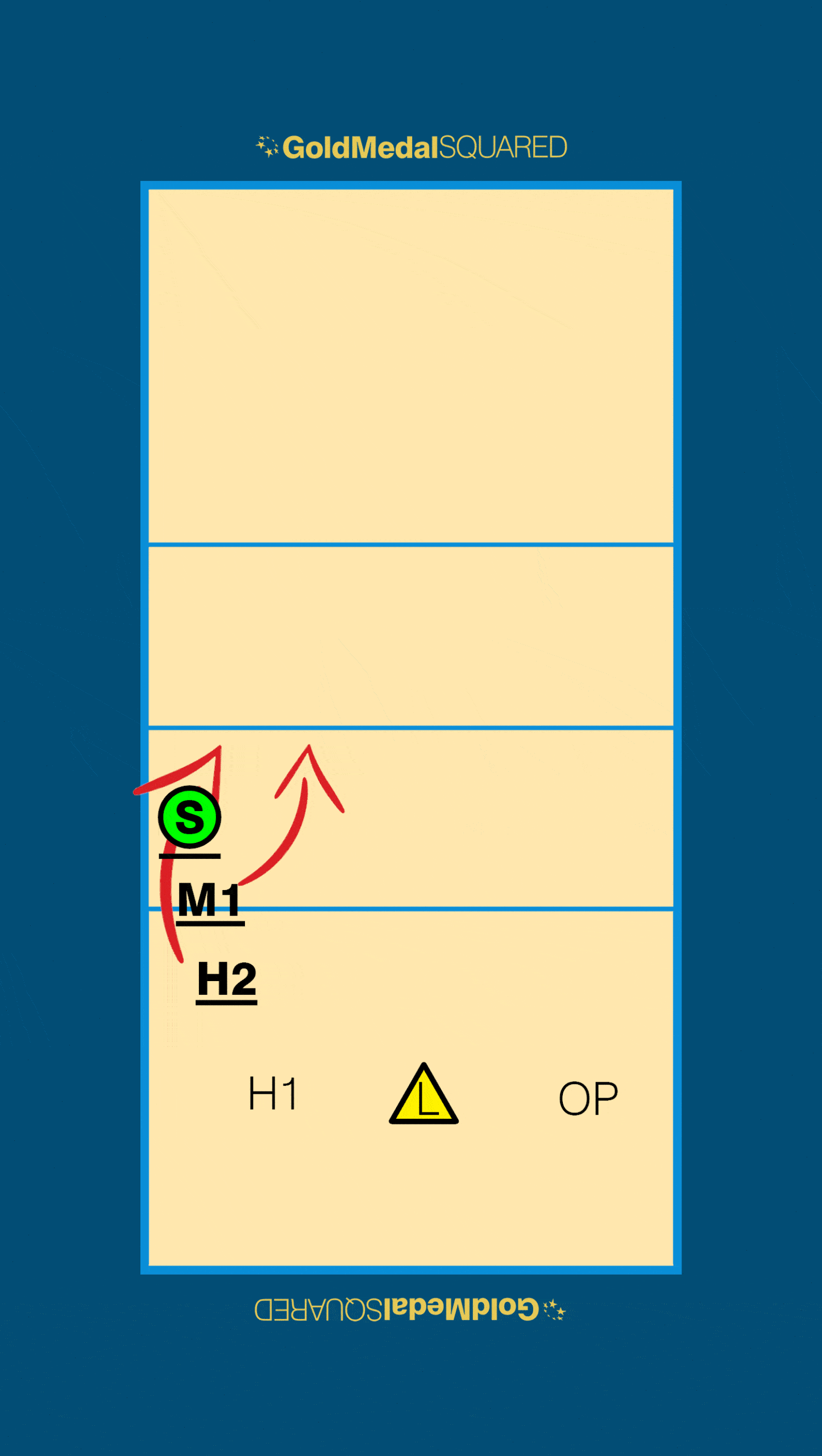
Player Assignments by Position:
S: Starts in Zone 4
H1: Passes in Zone 5
L: Passes in Zone 6
OP: Passes in Zone 1
H2: Starts in a position ready to attack and doesn’t pass
M1: Starts in Zone 4 and hits Gaps/Quicks OR Slides
Advantages/Benefits:
- The H2 doesn’t have to worry about passing and can focus on attacking.
- The Libero is passing in the middle of the court.
- The Opposite may be a better passer than the H2, especially if the Opposite is now a Defensive Specialist sub.
Disadvantages/Drawbacks:
- If the Opposite is also a good back row attacker, it might be easy for opposing teams to negate the D by serving to the Opposite.
Important Overlap Rules Considerations:
- The Setter must be to the left of the M1.
- The M1 must be to the left of the H2.
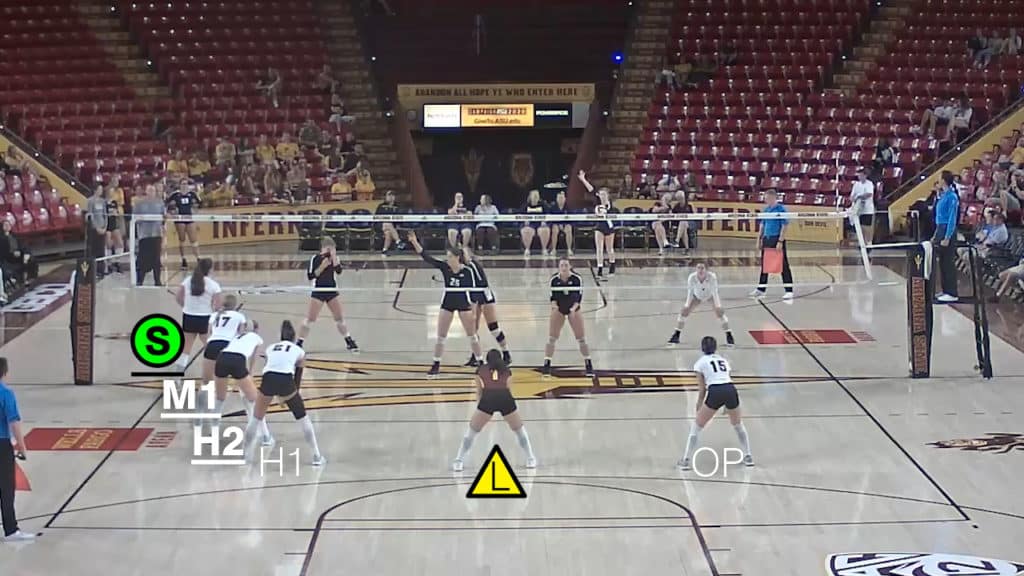
ROTATION 4 - Opposite Passing Option w/out H1 Passing
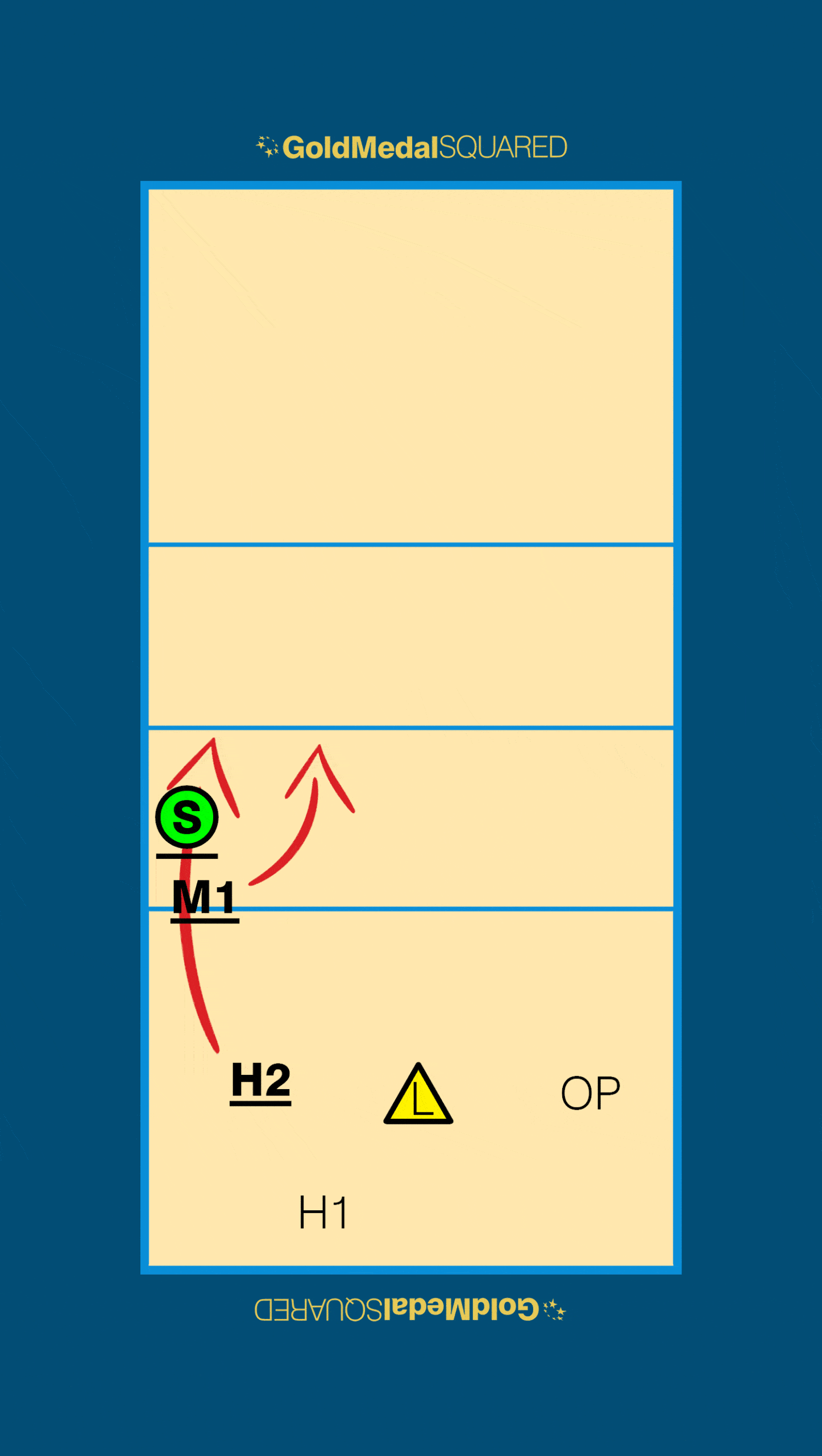
Player Assignments by Position:
S: Starts in Zone 4
H1: Moves back to the end line and doesn’t pass.
L: Passes in Zone 6
OP: Passes in Zone 1
H2: Passes in Zone 5 and hits Gos
M1: Starts in Zone 4 and hits Gaps/Quicks OR Slides
Advantages/Benefits:
- The Libero is passing in the middle of the court.
- The Opposite may be a better passer than the H1, especially if the Opposite is now a Defensive Specialist sub.
- If the H1 is a good Pipe hitter, this formation could help the H1 focus on that rather than passing.
- The H1 can help call “in” or “out” for the three passers.
Disadvantages/Drawbacks:
- A well-placed serve to zone 4 by the opposing team might be able to make it difficult for the M1 and H2 to get good offensive approaches.
Important Overlap Rules Considerations:
- The Setter must be to the left of the M1.
- The M1 must be to the left of the H2.
- The H2 must be in front of the Opposite.
- The H1 must be to the right of the Libero.
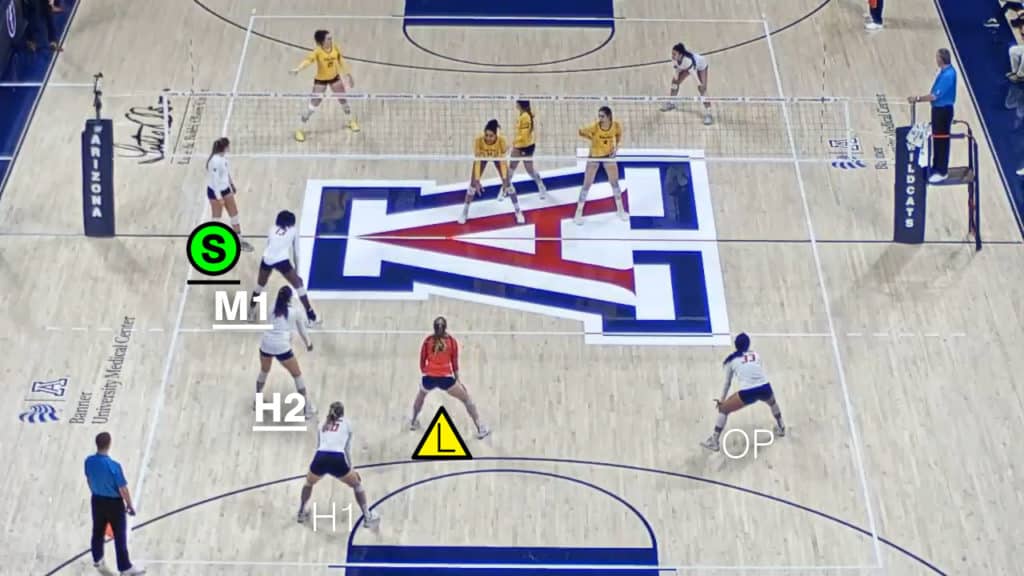
How to Decide?
Be sure to read the Rotation 3 blog post because it goes into more detail about how to decide which option is best for your team. But the most important factor should be passing. Make sure your three best passers are the three passers in each rotation. If the Opposite is one of the best three passers, you should choose a formation option that allows the Opposite to pass. Another factor to help make your decision is how well your attackers (specifically the H2 in this rotation) can attack after passing. If the H2 is not a good hitter after passing the serve, you may want to consider the formation option that doesn’t require her to pass.
Defensive Specialists
Coaches can replace any back-row player with a Defensive Specialist (DS). The DS typically is a player that is good in the back row as a passer and as a defender, but not as good of a front-row attacker as the other players on the team. Look at the DS as a second libero that can come in and play three rotations for the H1, H2, or Opposite. Oftentimes a DS would come in for the Opposite because traditionally the Opposite would be a weaker passer and defender than the H1 and the H2, but this is entirely dependent on your individual players.
If you have a DS that you want to utilize, you should consider having her replace whoever would be the biggest liability in the back row between the H1, H2, and Opposite. At the same time, however, you may not want to replace a strong back row attacker, if that is important to you and your offensive scheme.
Look at all the different options in each rotation to help you determine where a DS might be most helpful for your team. And of course, there is no rule against using multiple Defensive Specialists for multiple players.
Explore Our Complete Series on Volleyball Rotations
Volleyball Rotations & Overlap Rules
Volleyball Rotation 4 (this post)


